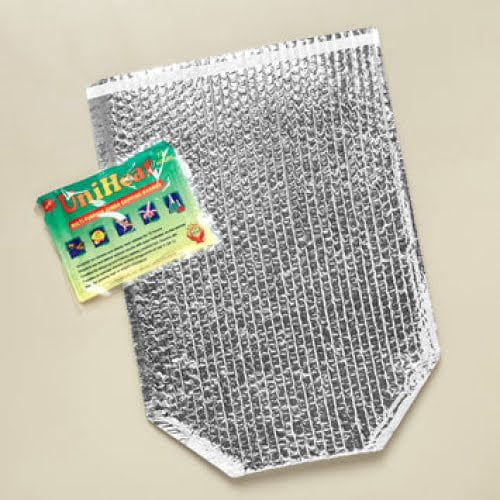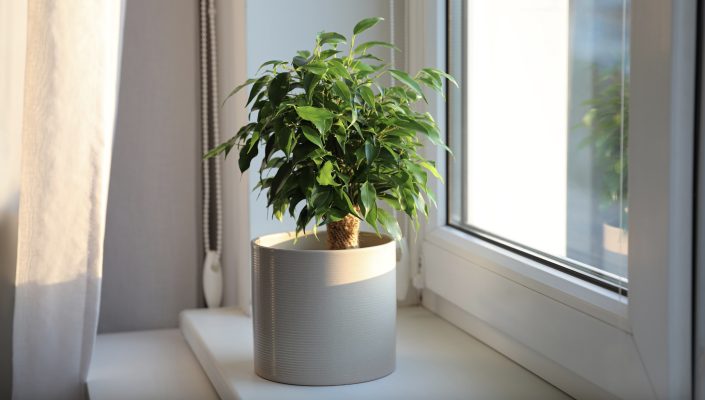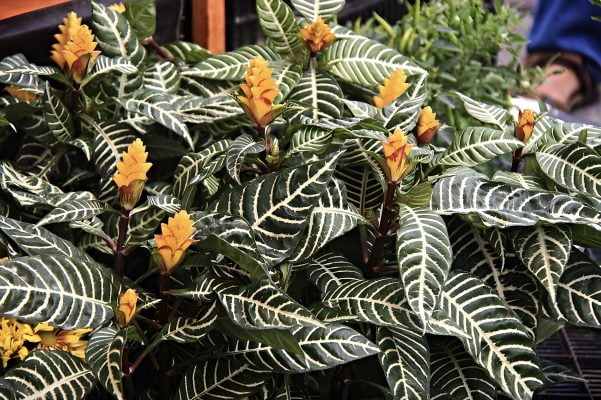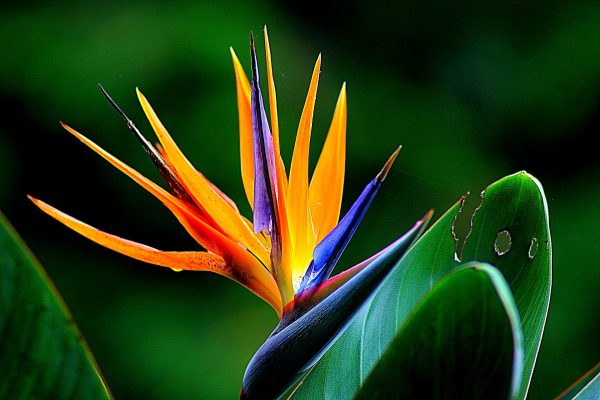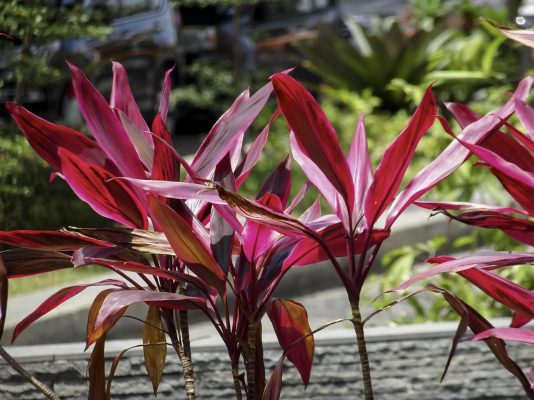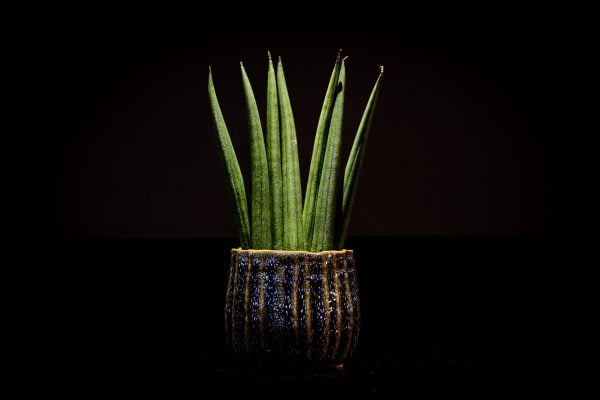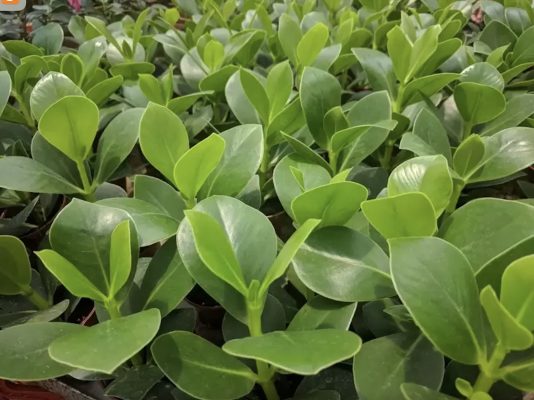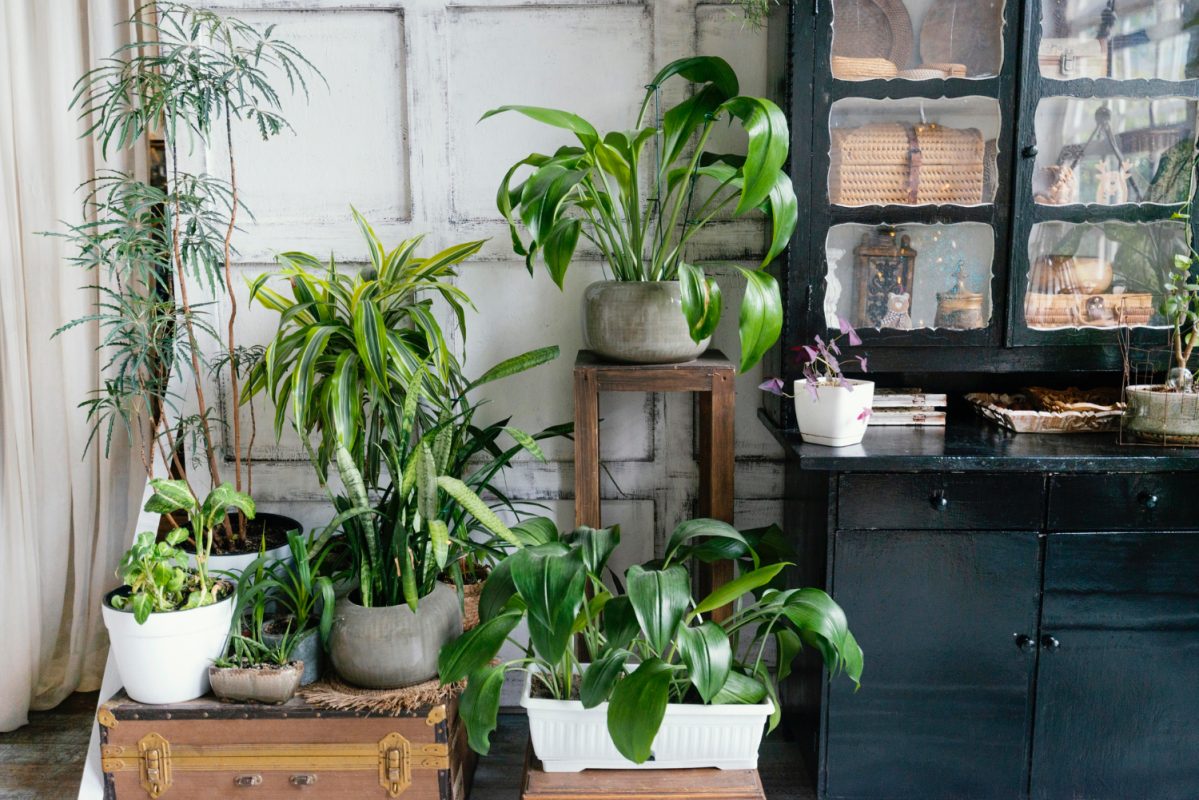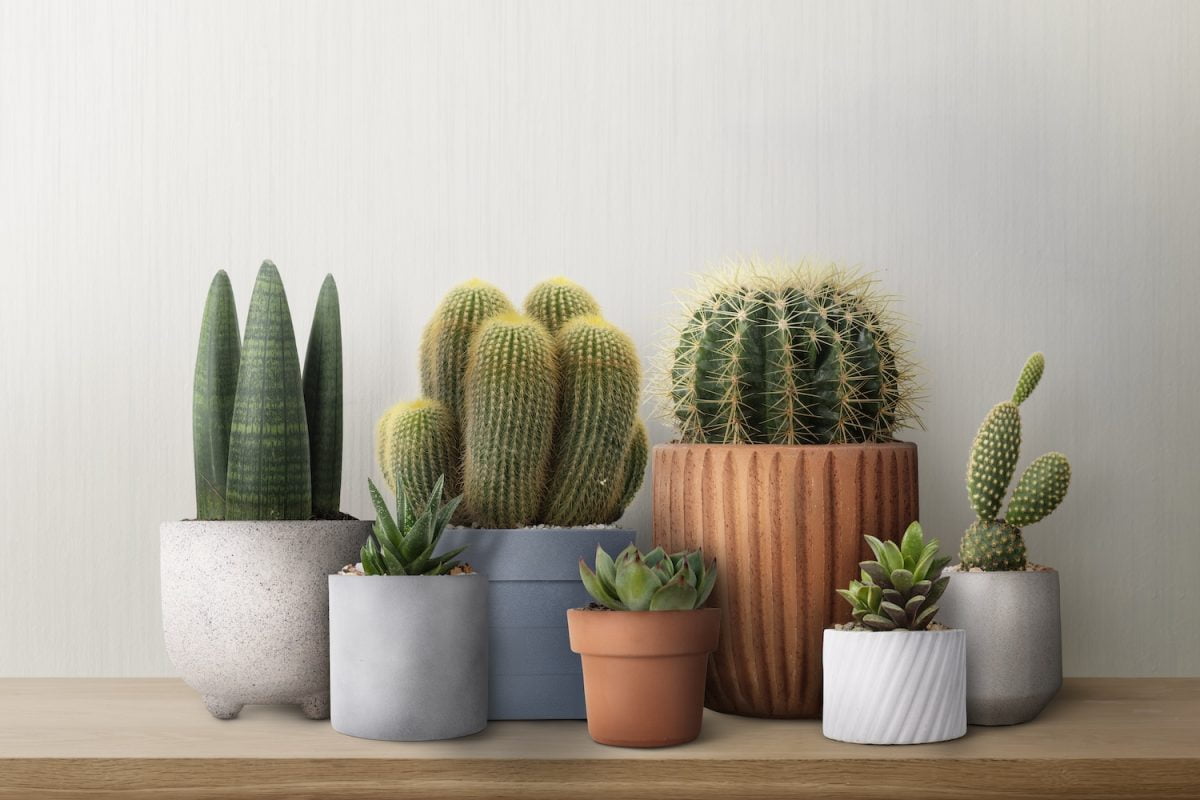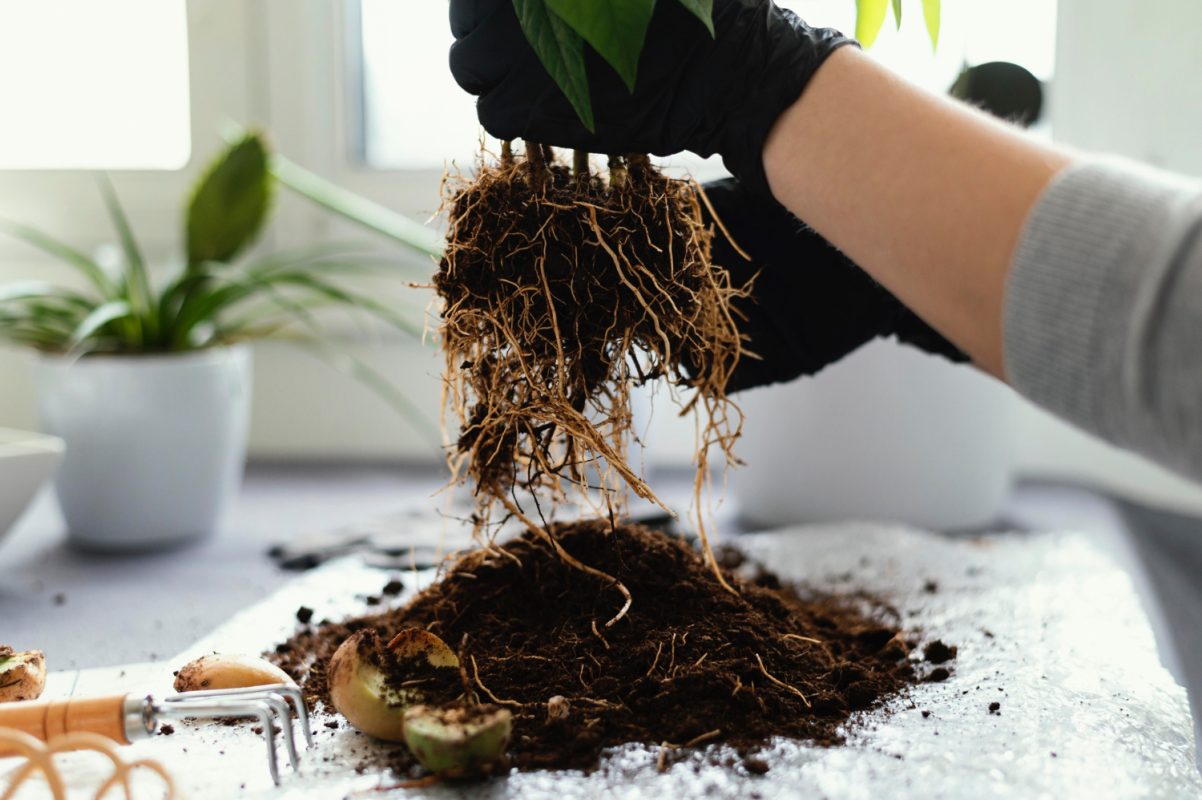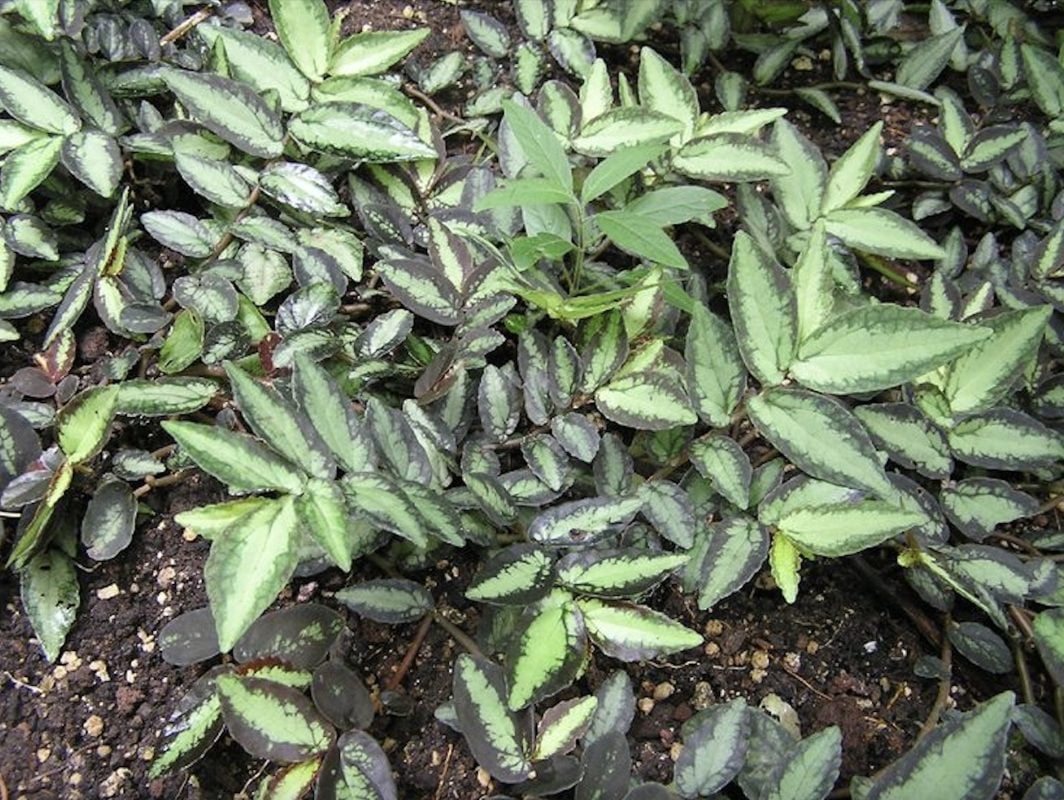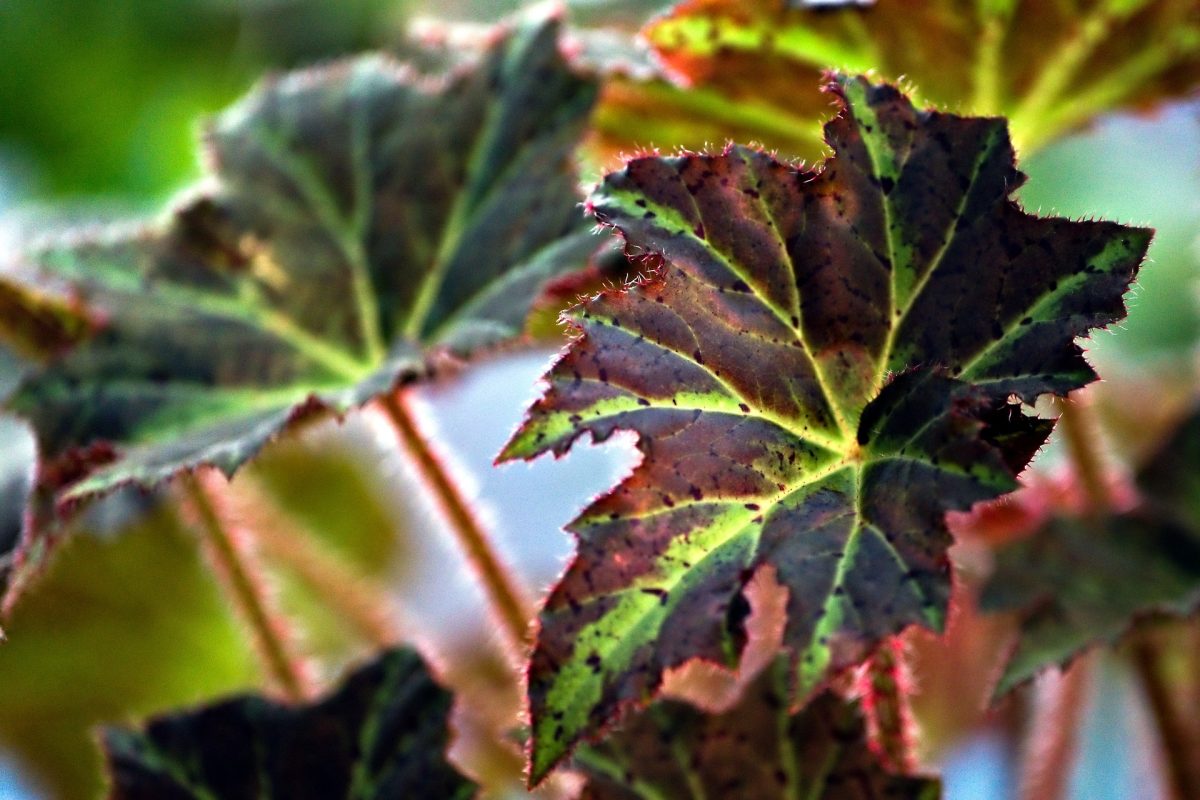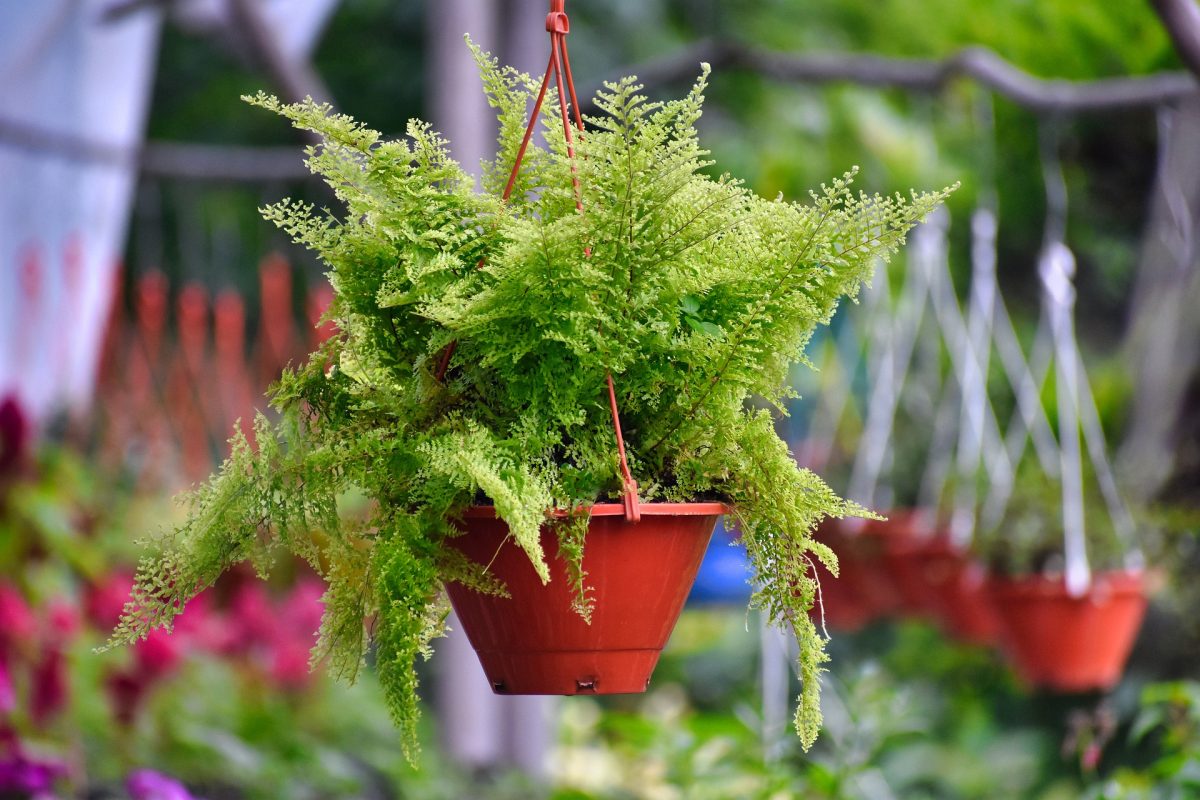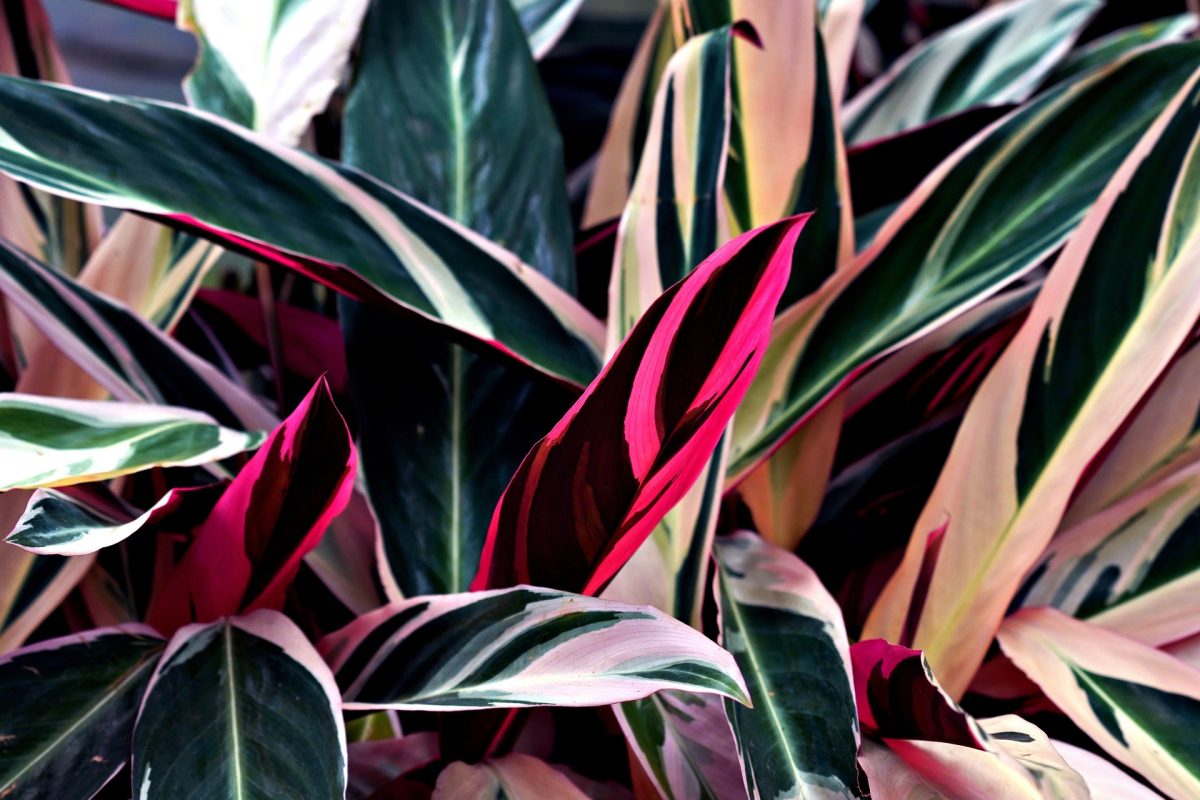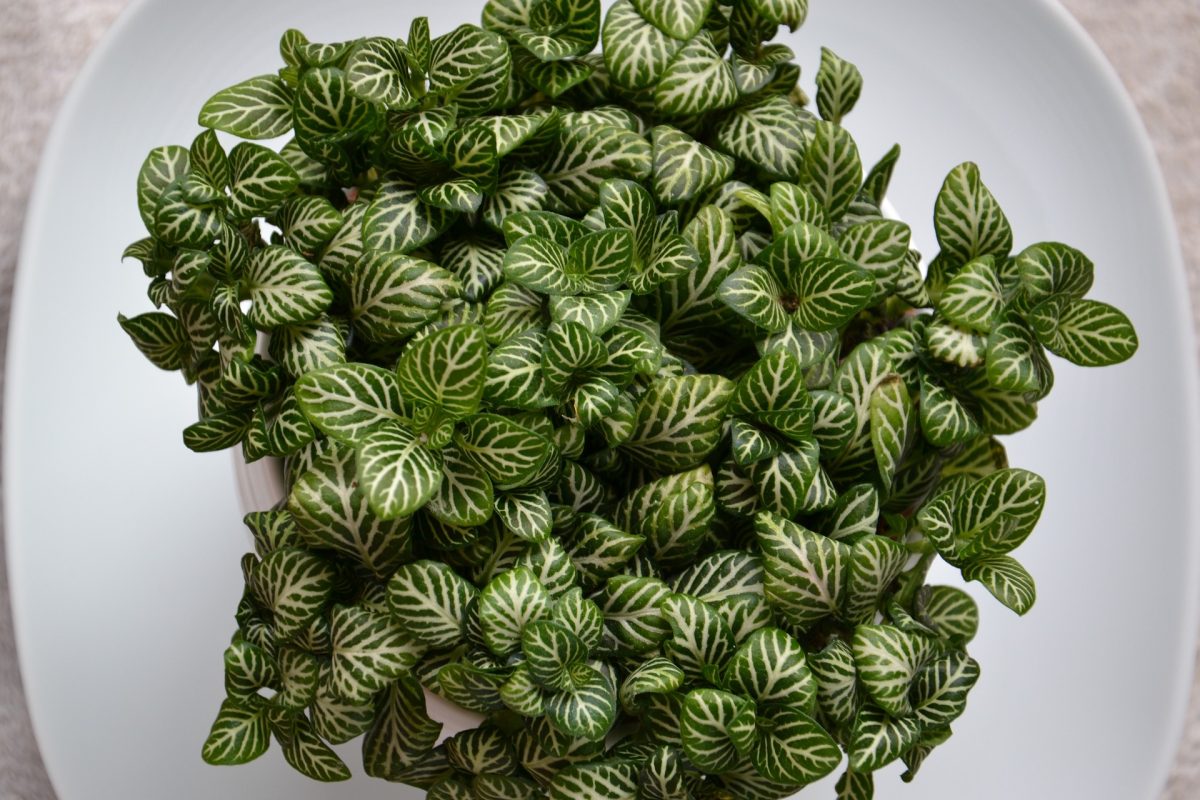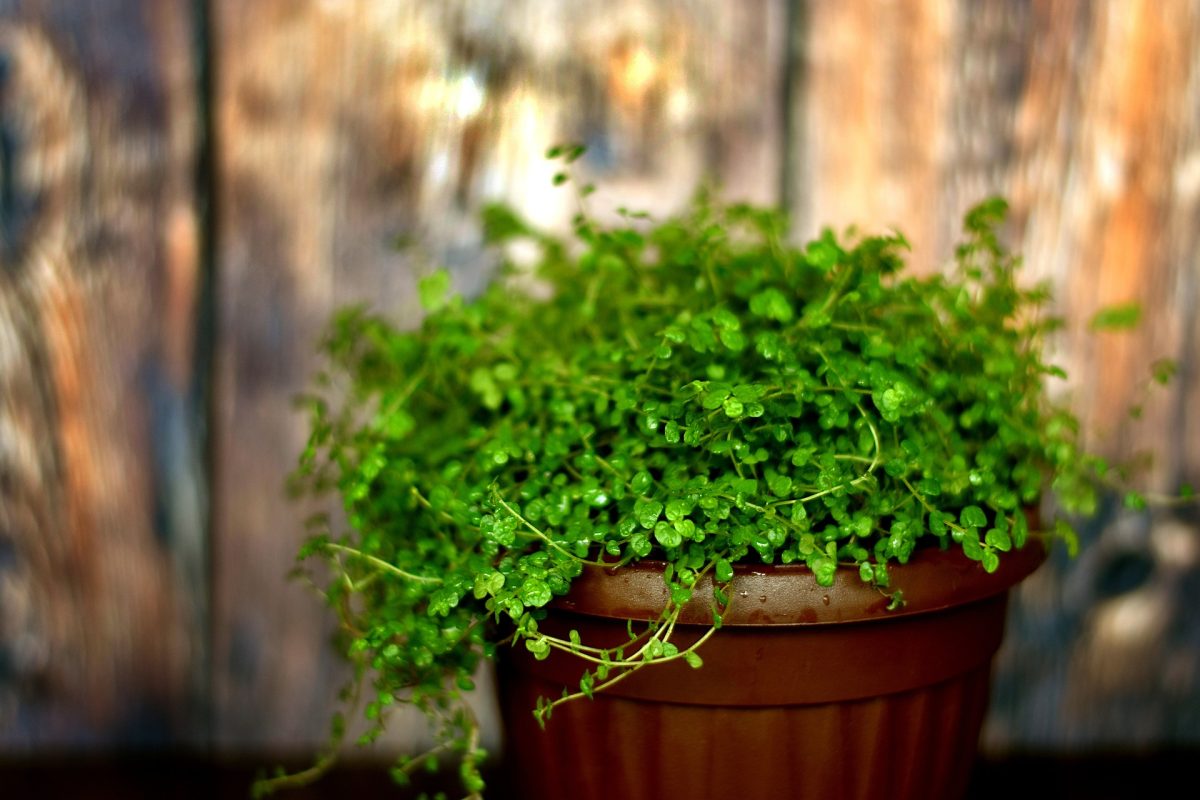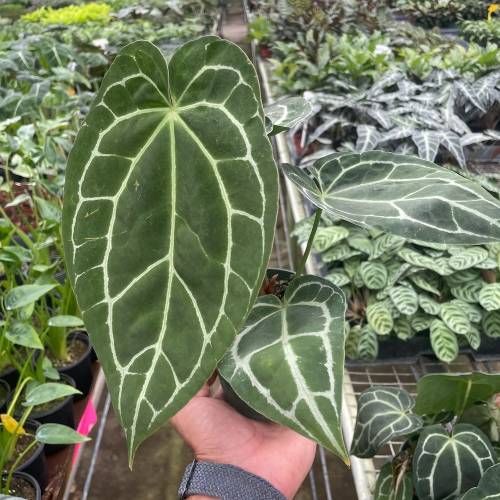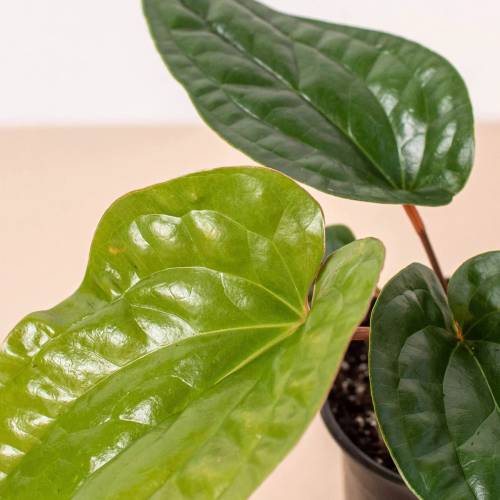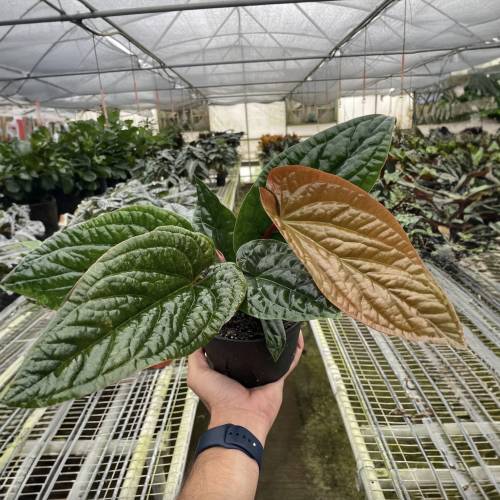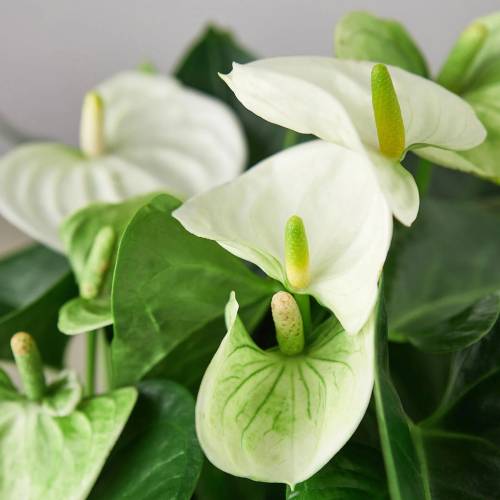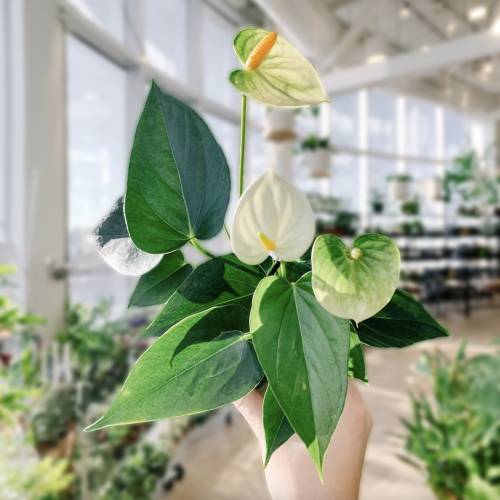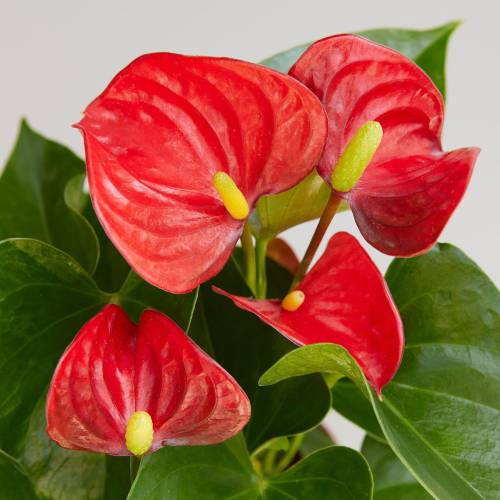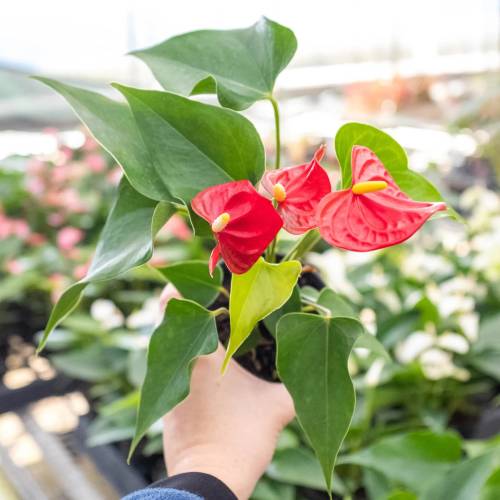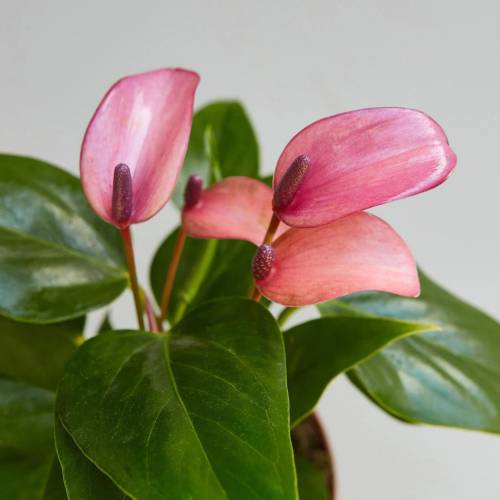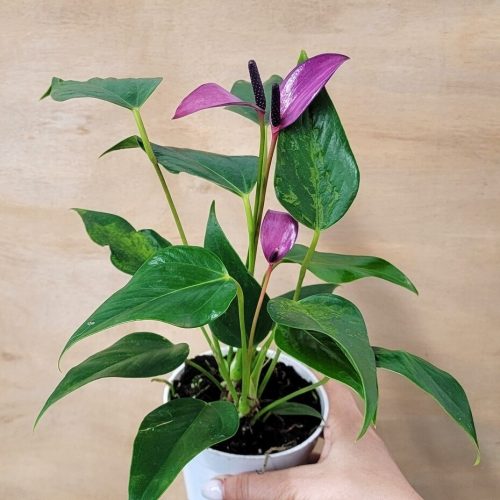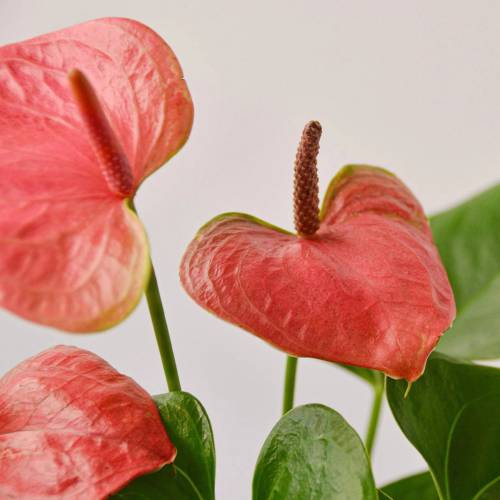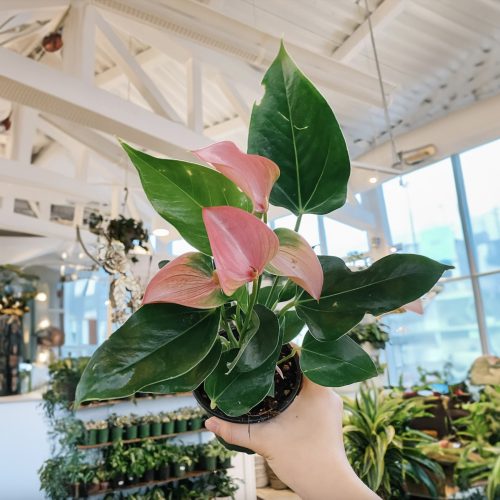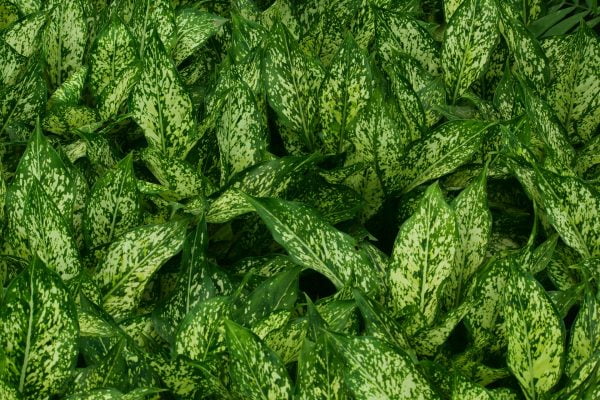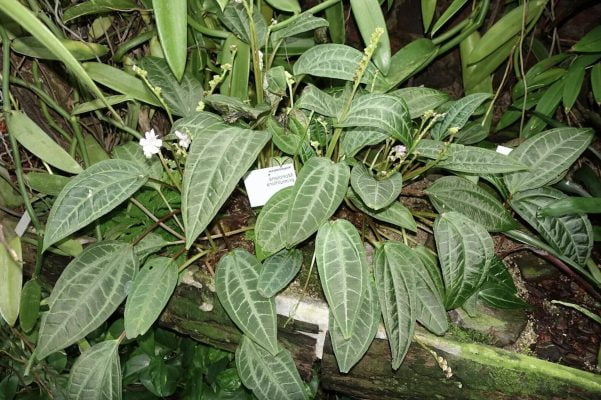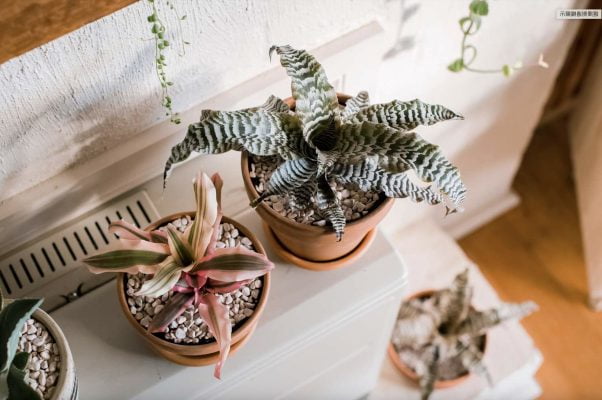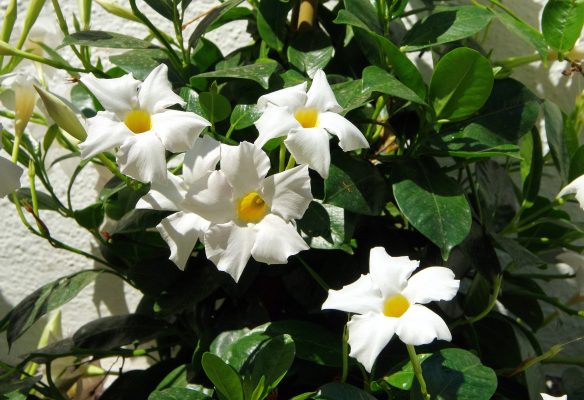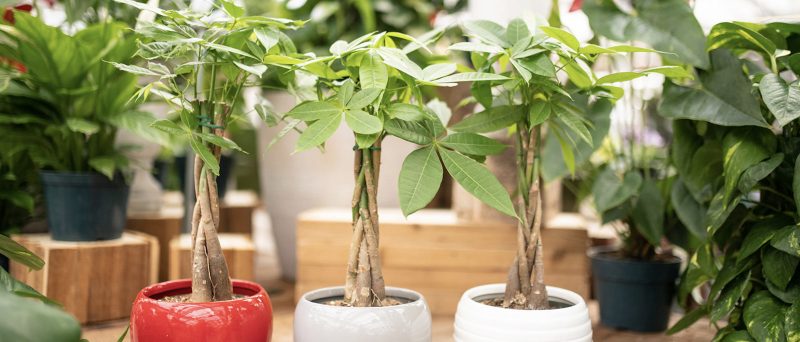Anthuriums, also known as “Flamingo Flowers” or “Laceleaf,” are captivating houseplants cherished for their glossy, heart-shaped flowers and lush, tropical foliage. This comprehensive care guide will equip you with the knowledge to cultivate healthy and vibrant Anthuriums, transforming your living space into a lush haven.
I. Plant Overview:
- Scientific Name: Anthurium spp.
- Common Names: Flamingo Flower, Laceleaf
- Origin: Native to tropical regions of Central and South America.
II. Light Requirements:
- Ideal Conditions: Bright, indirect light is optimal. Avoid direct sunlight, which can scorch the leaves.
- Tolerance: Can tolerate lower light conditions, but growth and flowering may be reduced.
III. Watering:
- Frequency: Water when the top inch of soil feels dry to the touch.
- Water Quality: Use lukewarm water, and ensure good drainage to prevent root rot.
- Humidity: Anthuriums thrive in high humidity. Regular misting or placing a humidity tray nearby can be beneficial.
IV. Soil:
- Type: Well-draining, airy potting mix with components like peat moss, perlite, and orchid bark.
- pH Level: Slightly acidic to neutral (pH 6.0-7.0).
V. Temperature and Humidity:
- Temperature: Maintain a warm environment, ideally between 65-80°F (18-27°C).
- Humidity: Aim for 60-80% humidity. In drier conditions, use a humidifier or group plants together.
VI. Fertilization:
- Schedule: Feed every 4-6 weeks during the growing season (spring and summer).
- Fertilizer: Use a balanced liquid fertilizer, diluted to half strength. Reduce or cease fertilization in the dormant season.
VII. Pruning and Maintenance:
- Pruning: Trim yellow or damaged leaves. Cut spent flowers to encourage new blooms.
- Cleaning: Wipe leaves with a damp cloth to remove dust, ensuring optimal light absorption.
VIII. Repotting:
- Frequency: Repot every 1-2 years, or when the plant outgrows its container.
- Procedure: Gently remove the plant, inspect roots, and repot in fresh soil. Choose a container with drainage holes.
IX. Common Issues and Solutions:
- Yellowing Leaves: Overwatering or poor drainage. Adjust watering habits and ensure proper drainage.
- Pests: Watch for pests like aphids or scale. Treat with insecticidal soap or neem oil.
- Leaf Browning: Low humidity or excessive direct sunlight. Increase humidity or relocate the plant.
X. Propagation:
- Method: Division or stem cuttings.
- Timing: Spring or early summer.
- Process: Carefully separate offsets or take a cutting with at least two nodes. Plant in fresh soil and provide appropriate care.
With proper care, your Anthurium will reward you with stunning, long-lasting blooms and lush foliage. Remember, attentive observation and a little love go a long way in nurturing these exquisite tropical plants. Happy gardening!
our recommendation
you may also want to know



